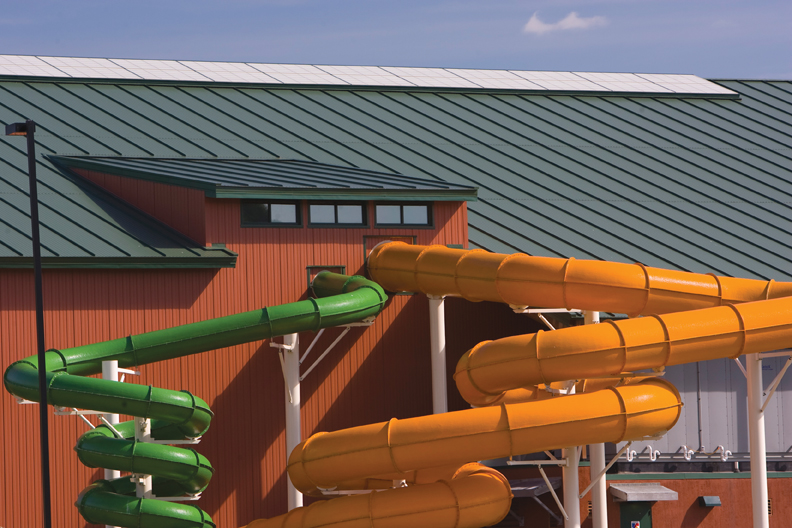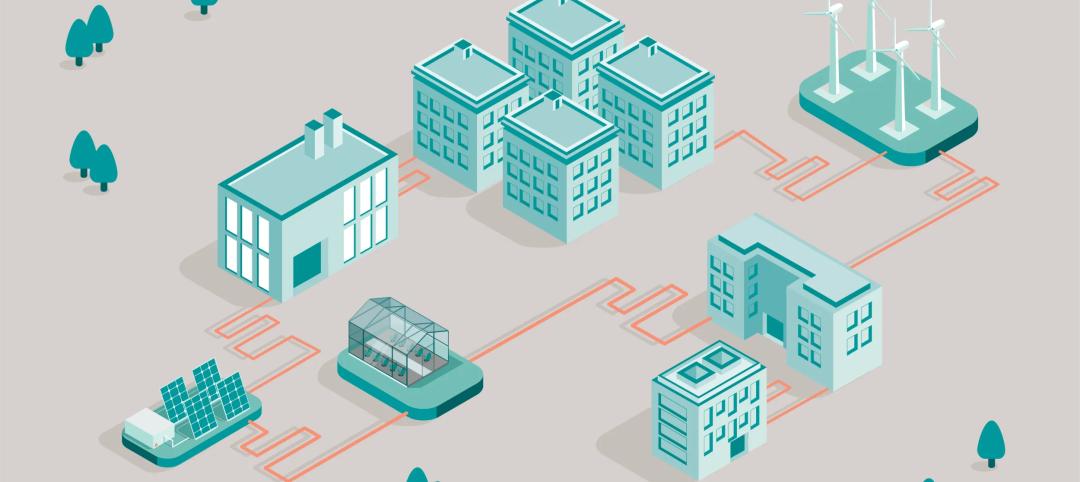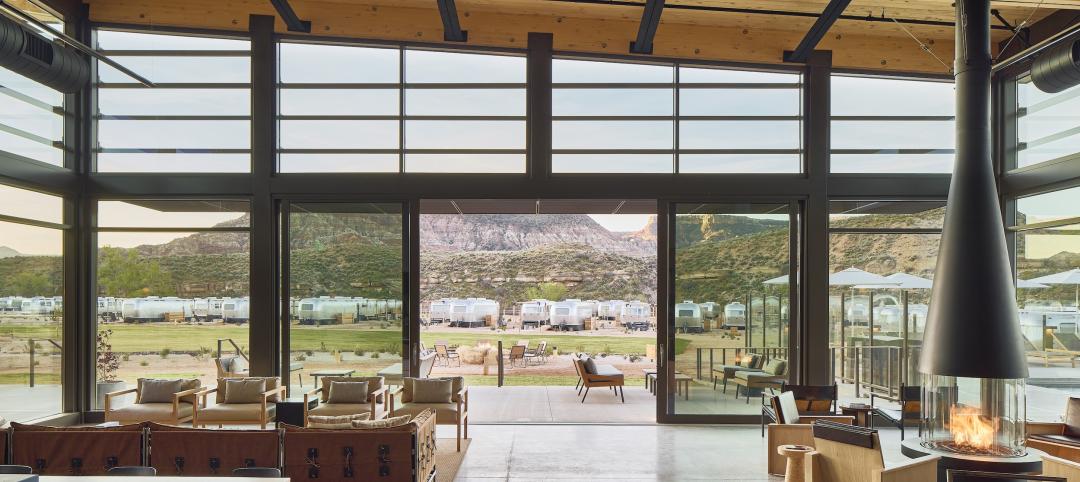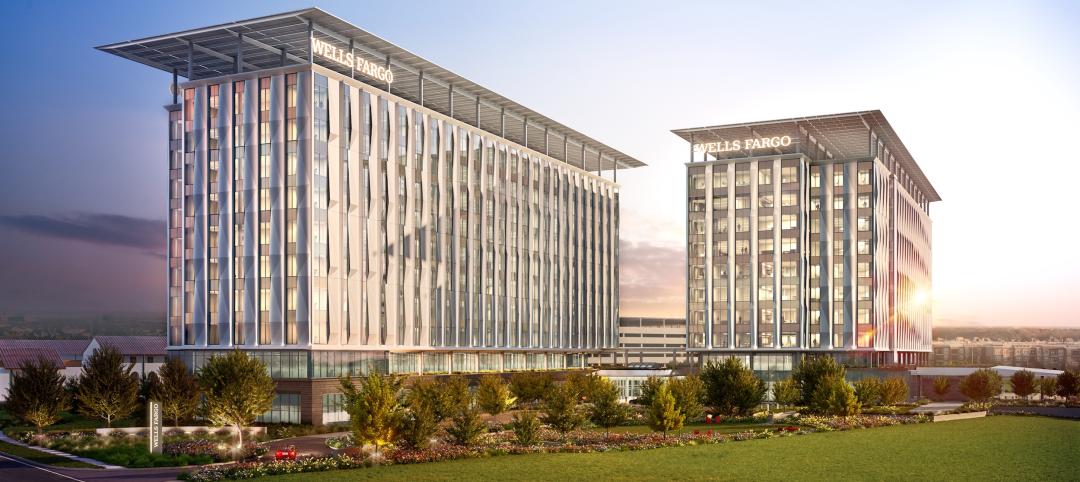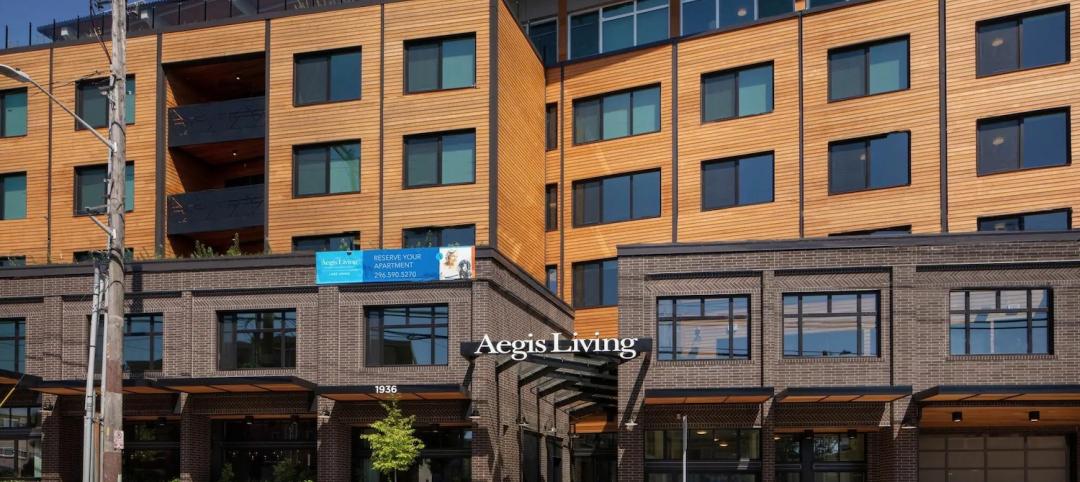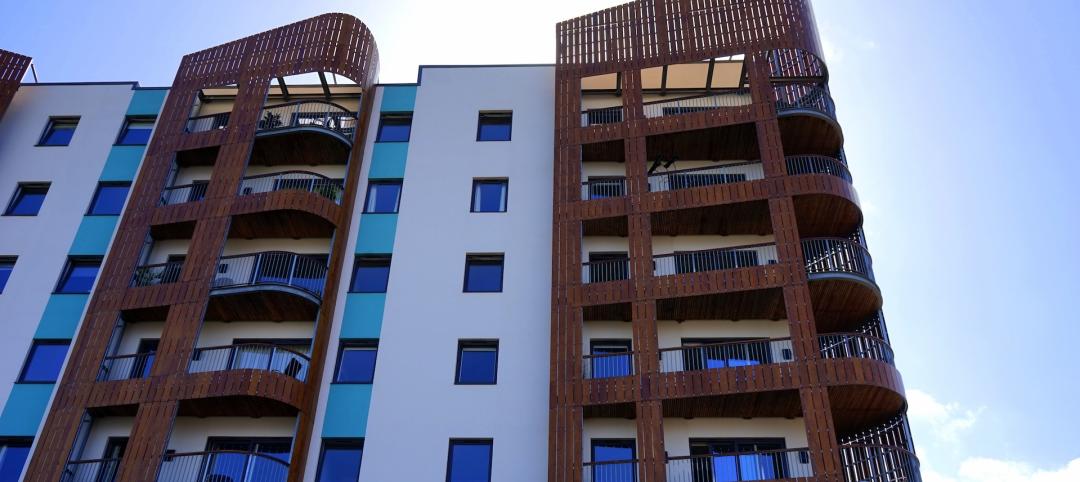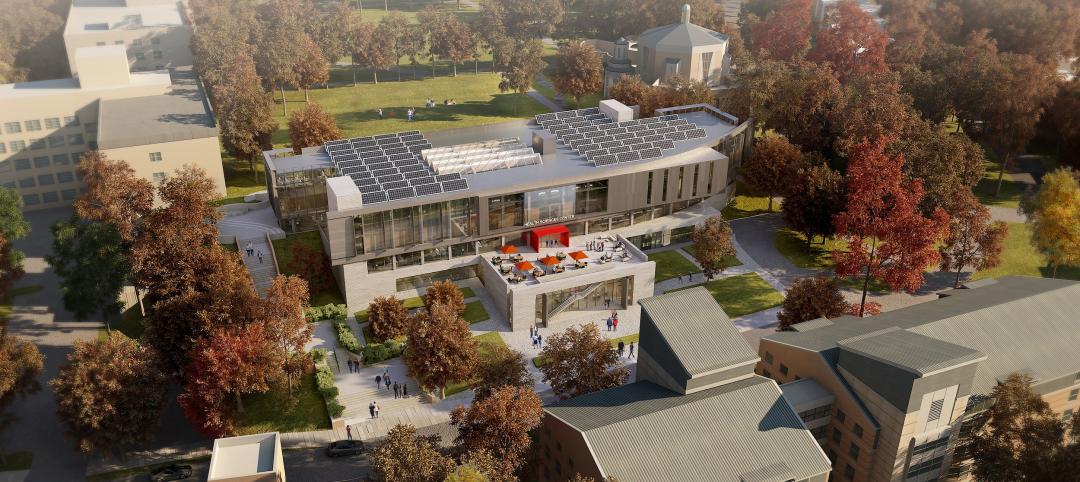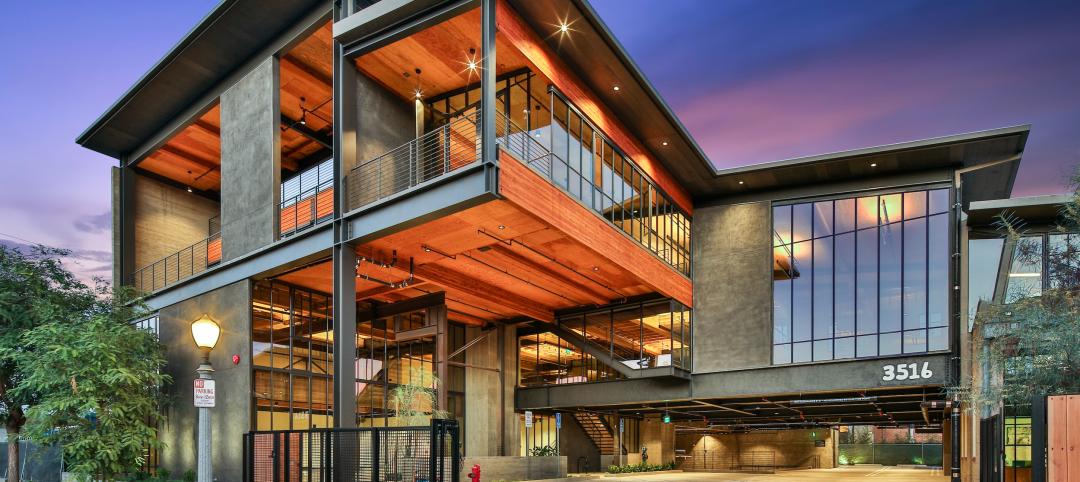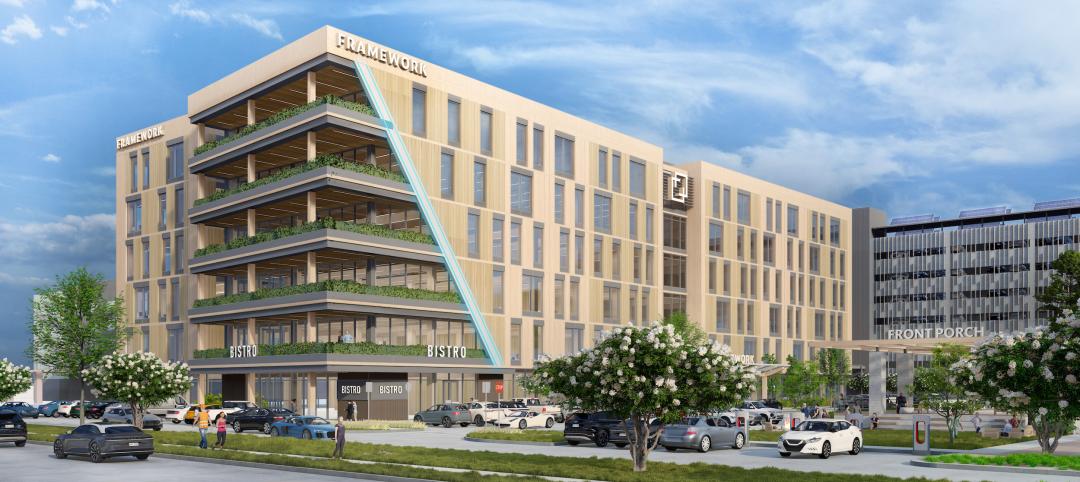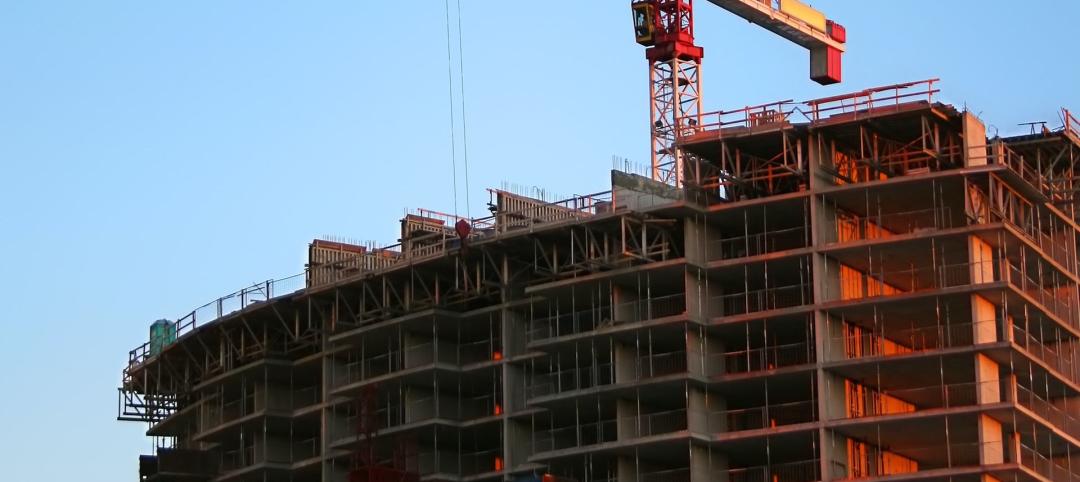Building owners and Building Teams seeking sustainable, aesthetically pleasing roofing solutions are turning to metal for its favorable life cycle benefits, longevity, and resistance to wind uplift, fire, and physical impact.
While metal is typically specified for new construction, it has significant potential for growth in retrofits. “Metal adds insulation, a ventilated cavity, and a reflective coating that makes the [old] roof several hundred percent more energy efficient,” says Chuck Howard, PE, of Metal Roof Consultants, Cary, N.C. “And the roof panels can last well over 60 years.”
Moreover, the installation cost of a metal roof is estimated to be comparable to tearing off and replacing the existing flat roof, says Ken Buchinger, vice president of R&D and business development for Houston-based manufacturer MBCI.
Metal roofing is unquestionably more design-friendly than it was 25 years ago. While steel remains the dominant material, metal roofing can also be fabricated from aluminum, copper, and zinc. Building Teams can dress it up with such features as dormers, Dutch hips, and offset ridges with clerestories. Many panel profiles and paint colors are available, as well as finishes that emulate copper, aluminum, stone, brick, and glass.
Thanks to more advanced manufacturing equipment, metal can be curved, tapered, and perforated in a variety of ways, says Dave Brown, director of new product development for Euramax International’s North American Commercial Division, Lancaster, Pa. Euramax is the parent company of Fabral Metal Roof and Wall Systems.
Brown urges designers to review drawings and specifications with the roofing manufacturer early on in the process. According to architect Mickey Conrad, AIA, “Metal roofs are great, but you can design yourself into a flashing and waterproofing jam if you’re not careful about how different roof forms intersect.”
Six things you should know about using metal roofing
1. If the roof geometry of your project is complicated, request a weather-tightness warranty from the manufacturer. Such warranties call for multiple roof inspections throughout the installation process.
2. Metal roofing is an especially good substrate for solar installations because it requires no roof penetrations. With proper maintenance, the roof should outlast the solar array.
3. Insulated metal roof panels eliminate the need for highly skilled labor on site and can be installed quickly.
4. In retrofits, if a metal roof is installed over the existing roof, the new framing will create a ventilated cavity that can be insulated to reduce the building’s energy consumption.
5. Architects can get the maximum creativity out of their roof design by working with the manufacturer in the early stages of a project.
6. Consult with the manufacturer for a recommendation on the right installer for the job.
Conrad, principal-in-charge of OCO Architects, San Antonio, Texas, prefers vertical standing-seam metal roofs with concealed fasteners: “They’re going to give our clients the best performance over many years.”
Insulated metal roof panels could become more widespread as Building Teams strive for LEED points. Doug Pickens, vice president of marketing for IMP roofing manufacturer Metl-Span, Lewisville, Texas, says the volume of IMPs sold in the U.S. and Canada has doubled in the last three years, even though IMP systems cost twice as much as single-ply or standing-seam metal roofing.
Because they have insulating foam sandwiched between two layers of metal, he says, IMPs provide an air and vapor barrier with no thermal bridging. “The insulation is continuous across the entire roof,” says Pickens. “The panels go down incredibly fast. A contractor who has a little bit of experience can put down as much as 10,000 sf a day with a five-man crew and a crane.”
Let’s take a look at how metal systems have been used in three different kinds of applications.
1. METAL ROOF MAKES A SPLASH
The new water park at Hope Lake Lodge in Virgil, N.Y., has transformed the resort into a year-round destination. By installing a metal roof, the owners of the water park have been able to maintain its interior temperature at 80-84°F, even during the coldest months.
VIP Structures, Syracuse, N.Y., erected the building and installed 60,000 sf of Metl-Span insulated roof and wall panels. The steep roof, with its 100-foot-long skylight at the ridge line, was something of a challenge, but the crew successfully managed the hips, valleys, and trim, according to Leonard Pogroski, project manager for VIP Structures.
The LEED Silver project was designed by RBA Group, Charlotte, N.C. “By using a steel superstructure with insulated panels, we were able to create the large clear spans necessary for housing the water-park features and provide high thermal efficiency,” says architect Steven E. Finch, LEED AP, Assoc. AIA, RBA’s director of hospitality. IMPs were also chosen because they permitted multiple punched openings where the waterslide chutes exit and reenter the building, according to Finch.
2. RETROFIT HELPS DRY OUT SCHOOL ROOF
During its 42 years of service, the BUR roof of Winchester High School in Richmond, Ind., had been patched numerous times, but continued to leak. Students and teachers regularly complained about the wet, humid environment and unpleasant odor.
The school board considered a flat-roof retrofit, but parents and students protested so vehemently that the board called in Metal Roof Consultants. MRC proposed installing a sloped metal roof over the existing flat roof. This meant that there would be no interruption of school activities.
Six inches of unfaced fiberglass insulation were installed directly over the existing roof, raising insulating value from R-3.5 to R-22.5. The existing roof was able to release its moisture through the insulation into the new roof cavity, where it was expelled through side vents. “The classroom wing was the wettest, so we worked on that first,” says MRC’s Howard. “It dried out in less than a year.”
Energy Star paint additives create a cool roof that reflects approximately 80% of the solar heat back into the atmosphere. Howard says the roof system is warranted against leaking for 20 years but should provide 50-60 years of service, with no maintenance other than periodic checks for external damage.
Smarrelli General Contractor, Richmond, Ind., used MBCI’s NuRoof system, in which light-gauge steel framing is installed over existing framing members to create a sloped plane. BattenLok HS standing-seam panels were installed over the framing. Steve Shute, Smarrelli’s general manager, says the manufacturer made the project, even with its high load conditions and roof curbs, “work very well.” Most important, there haven’t been any leaks.
3. ROOFTOP SOLAR ADDS TO SUSTAINABILITY
When the city of Allegan, Mich., had to upgrade its water-treatment plant, it rejected a costly retrofit and decided instead to build a new reverse-osmosis facility. The $10 million project, funded by federal grants and a low-interest loan from the state, includes a half-million-gallon ground storage tank, an on-site mixed-oxidant generation system, and a rooftop solar system.
Architect/engineer Prein & Newhof, Grand Rapids, Mich., specified Fabral’s Solar SSR, which integrates flexible thin-film solar laminates with a standing-seam metal roof. Once the wood-truss framing and sheathing were in place, Erhardt Construction, Ada, Mich., installed the roof and solar array, which generates 29.38 kW of electricity.
Dave Brown of Euramax, Fabral’s parent company, says thin-film laminates are lightweight and flexible and achieve high relative efficiency under high temperatures and low light. “No roof penetrations or additional structural support are needed, and you can walk on the laminates,” says Brown. He says the panel/laminate bond has been proven to withstand 160 mph winds. +
Related Stories
Sustainability | May 11, 2023
Let's build toward a circular economy
Eric Corey Freed, Director of Sustainability, CannonDesign, discusses the values of well-designed, regenerative buildings.
Hotel Facilities | May 9, 2023
A new camping destination near Utah’s Zion National Park offers a variety of all-season lodgings and amenities
Outdoor lodging brand AutoCamp has opened a new camping destination near Utah’s Zion National Park. A 16-acre property, AutoCamp Zion is located between the Virgin River and the desert of Southern Utah.
Headquarters | May 9, 2023
New Wells Fargo development in Texas will be bank’s first net-positive campus
A new Wells Fargo development in the Dallas metroplex will be the national bank’s first net-positive campus, expected to generate more energy than it uses. The 850,000-sf project on 22 acres will generate power from solar panels and provide electric vehicle charging stations.
Regulations | May 8, 2023
Supreme Court case likely to have huge impact on Clean Water Act
A case before the Supreme Court will likely determine how the Clean Water Act is interpreted and the ruling could open up new areas for development within or adjacent to wetlands.
Senior Living Design | May 8, 2023
Seattle senior living community aims to be world’s first to achieve Living Building Challenge designation
Aegis Living Lake Union in Seattle is the world’s first assisted living community designed to meet the rigorous Living Building Challenge certification. Completed in 2022, the Ankrom Moisan-designed, 70,000 sf-building is fully electrified. All commercial dryers, domestic hot water, and kitchen equipment are powered by electricity in lieu of gas, which reduces the facility’s carbon footprint.
Multifamily Housing | May 8, 2023
The average multifamily rent was $1,709 in April 2023, up for the second straight month
Despite economic headwinds, the multifamily housing market continues to demonstrate resilience, according to a new Yardi Matrix report.
University Buildings | May 5, 2023
New health sciences center at St. John’s University will feature geothermal heating, cooling
The recently topped off St. Vincent Health Sciences Center at St. John’s University in New York City will feature impressive green features including geothermal heating and cooling along with an array of rooftop solar panels. The geothermal field consists of 66 wells drilled 499 feet below ground which will help to heat and cool the 70,000 sf structure.
Office Buildings | May 4, 2023
In Southern California, a former industrial zone continues to revitalize with an award-winning office property
In Culver City, Calif., Del Amo Construction, a construction company based in Southern California, has completed the adaptive reuse of 3516 Schaefer St, a new office property. 3516 Schaefer is located in Culver City’s redeveloped Hayden Tract neighborhood, a former industrial zone that has become a technology and corporate hub.
Mass Timber | May 3, 2023
Gensler-designed mid-rise will be Houston’s first mass timber commercial office building
A Houston project plans to achieve two firsts: the city’s first mass timber commercial office project, and the state of Texas’s first commercial office building targeting net zero energy operational carbon upon completion next year. Framework @ Block 10 is owned and managed by Hicks Ventures, a Houston-based development company.
Market Data | May 2, 2023
Nonresidential construction spending up 0.7% in March 2023 versus previous month
National nonresidential construction spending increased by 0.7% in March, according to an Associated Builders and Contractors analysis of data published today by the U.S. Census Bureau. On a seasonally adjusted annualized basis, nonresidential spending totaled $997.1 billion for the month.


